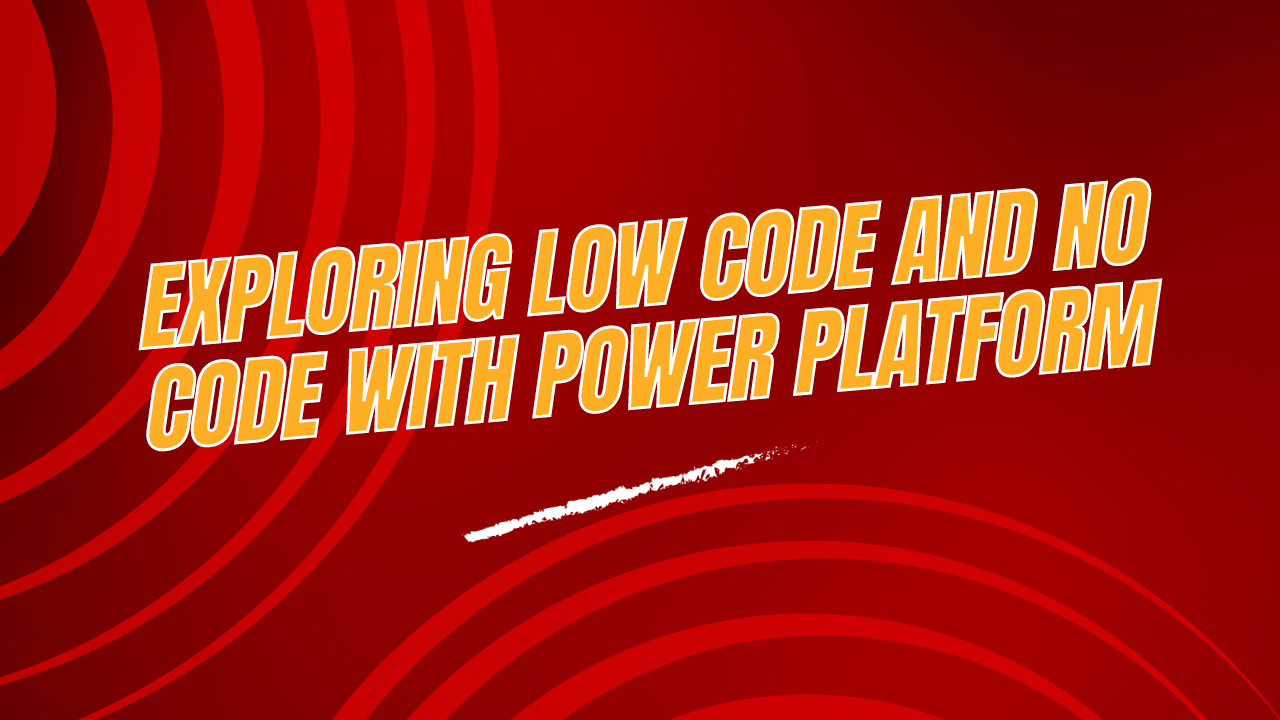Introduction
In the dynamic world of software development, the rise of Low Code and No Code platforms has ushered in a new era of innovation, accessibility, and speed.
These platforms, often referred to as “Low Code No Code” or “LCNC,” empower individuals with varying technical backgrounds to create applications and solutions with minimal coding effort.
Microsoft’s Power Platform stands at the forefront of this movement, enabling users to build sophisticated applications, automate workflows, and analyse data without the need for extensive coding expertise.
This article delves into the concepts of Low Code and No Code development and how the Power Platform has revolutionised the way applications are conceived, developed, and deployed.
Demystifying Low Code and No Code
Low-code platforms provide a visual interface that abstracts much of the complex coding process. While coding is still present, it’s significantly reduced, allowing developers to build applications by dragging and dropping pre-built components.
No Code platforms take the abstraction a step further, enabling users with limited or no coding background to create functional applications through graphical interfaces, forms, and template
The Power Platform: Enabling LCNC Innovation
Microsoft’s Power Platform consists of four core services: Power Apps, Power Automate, Power BI, and Power Virtual Agents. Each service addresses a different aspect of LCNC development, collectively offering a comprehensive solution for creating applications, automating processes, analyzing data, and building chatbots.
Power Apps: Building Applications with Ease
Power Apps’ Canvas Apps allow users to create custom applications from scratch, utilising visual design tools and a wide range of templates
Model-driven apps enable users to design applications around existing data models, making it easier to create structured and data-centric applications.
Power Automate: Streamlining Workflows
Power Automate simplifies complex business processes by automating workflows and connecting various services and applications
Users can create time-based or scheduled flows that trigger specific actions, eliminating the need for manual intervention
Power BI: Data Analysis Made Accessible
Power BI empowers users to create interactive and visually appealing reports and dashboards, turning raw data into actionable insights.
Power BI integrates AI capabilities to offer advanced data analytics and predictions without requiring extensive data science knowledge
Power Virtual Agents: Conversational AI Simplified
Power Virtual Agents allows users to create chatbots and conversational agents, making it easier to engage with customers and employees through automated interactions
Advantages of LCNC Development with Power Platform
LCNC development significantly reduces the time required to develop and deploy applications, expediting digital transformation
Non-technical stakeholders can actively participate in application development, fostering collaboration across teams
Business users can create solutions independently, reducing the burden on IT departments
LCNC platforms facilitate iterative development, allowing for quick adjustments and improvements based on user feedback
Conclusion
The era of Low Code No Code development, powered by platforms like Microsoft Power Platform, has democratized application creation and innovation.
By removing barriers to entry and enabling users with varying technical backgrounds to contribute, LCNC development drives efficiency, accelerates digital transformation, and enhances collaboration.
As organisations embrace this paradigm shift, they unlock new opportunities to address business challenges, seize market opportunities, and realize their digital ambitions with unprecedented speed and agility.
For any Help or Queries Contact us on info@crmonce.com or +918096556344

